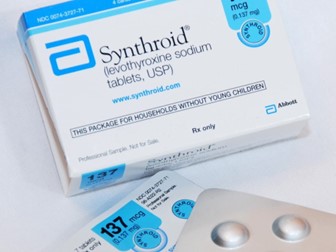A doctor orders 0.1 mg of Synthroid (levothyroxine), and 50 mcg tablets are available.
How many tablets per dose should the nurse administer to this patient?
1 tablet
3 tablets
4 tablets
2 tablets
The Correct Answer is D
The nurse should administer 2 tablets per dose to this patient.
This answer is correct because it is based on a simple unit conversion and ratio and proportion calculation. The nurse can convert 0.1 mg to 100 mcg by multiplying by 1000, since there are 1000 mcg in 1 mg. Then, the nurse can set up a proportion as follows:
50 mcg / 1 tablet = 100 mcg / x tablets
Cross-multiplying and solving for x gives:
x = 2 tablets
Therefore, the nurse should administer 2 tablets of Synthroid to deliver 0.1 mg or 100 mcg of the medication to the patient.

Nursing Test Bank
Naxlex Comprehensive Predictor Exams
Related Questions
Correct Answer is D
Explanation
To answer this question, we need to calculate the infusion rate in mL per hour, then multiply it by the total time in hours, and finally divide it by 1000 to get the volume in litres.
The infusion rate in mL per hour is the amount of fluid that is given to a patient over a period of time. It can be calculated by dividing the total volume of fluid in mL by the total time in hours². In this case, the infusion rate is:
2.75 mL/min × 60 min/h = 165 mL/h
The total volume of fluid in mL is the infusion rate multiplied by the total time in hours. In this case, the total volume is:
165 mL/h × 7 h = 1155 mL
The volume in litres is the volume in mL divided by 1000. In this case, the volume in litres is:
1155 mL / 1000 = 1.16 L
Therefore, the correct answer is d. 1.16 L.
Correct Answer is B
Explanation
This number should be multiplied by inches in order to convert a patient's height measurement from inches to centimeters, because one inch is equal to 2.54 centimeters. To convert inches to centimeters, the formula is:
centimeters = inches × 2.54
For example, if a patient's height is 60 inches, then the height in centimeters is:
centimeters = 60 × 2.54
centimeters = 152.4
Therefore, the patient's height is 152.4 centimeters.
Whether you are a student looking to ace your exams or a practicing nurse seeking to enhance your expertise , our nursing education contents will empower you with the confidence and competence to make a difference in the lives of patients and become a respected leader in the healthcare field.
Visit Naxlex, invest in your future and unlock endless possibilities with our unparalleled nursing education contents today
Report Wrong Answer on the Current Question
Do you disagree with the answer? If yes, what is your expected answer? Explain.
Kindly be descriptive with the issue you are facing.
